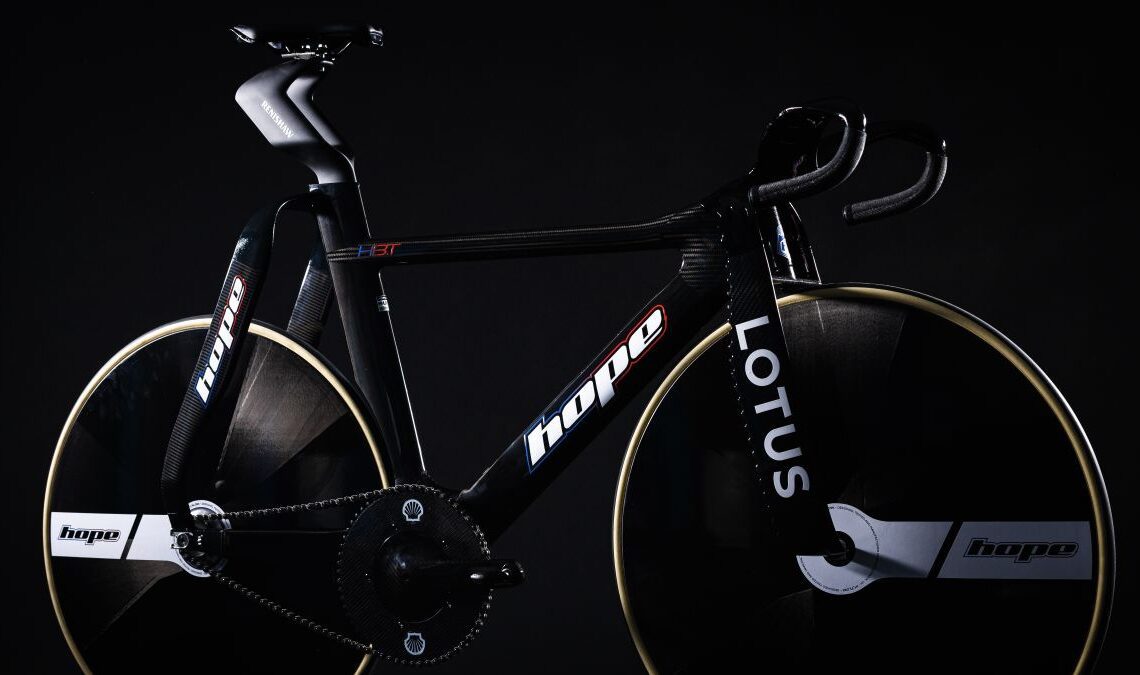Lots of new bikes land on the scene to some moderate fanfare. Some create a buzz before they are even officially launched, and others simply trickle onto the market totally unnoticed.
The original Hope x Lotus track bike caused a stir unlike any I’ve ever seen when it was launched in 2019 ahead of the Tokyo Olympics. With the Paris Olympics on the horizon for 2024, and the Glasgow World Championships the last opportunity for teams to use their new equipment to be in line with registration requirements, it means we’re getting a glimpse of a new beast.
As with debut albums, the first iteration is a tough act to follow, but the difficult second album is bringing ‘wobbly bits’ to the table, while seemingly still keeping the tried and tested madness of ‘absurdly wide set fork legs’. This also follows the 3D-printed, extremely bonkers-looking Toot Racing track bike that we’ve covered, to be used by the Argentinian track squad. Is track where it’s at for new tech this year?
What’s new?
The press material we have received includes no real tech details, but given the secrecy that often surrounds Olympic-level tech, where thousandths of a second separate winners, this is no great surprise. The short version is that the bike is still a collaboration with Hope, Lotus, and Renishaw, an additive manufacturing company (read: 3D printing for Titanium).
In terms of changes from the old bike, we will have to rely on visual clues. Up front, the most obvious change is with the handlebars. The old bar was a normal (in the context of the bike as a whole) looking set of bars with a flat crossbar, whereas here the bars rise up from the top of the headtube like a pair of ram’s horns.
Without geometry charts, it’s impossible to say, but this may indicate that the front end of the bike is lower, compensated by the rise of the bars. We see this on the road with the Cervelo S5 and in a lesser way with the new Bianchi Oltre.
If your eyes aren’t immediately drawn to the front of the bike, they will be to the rear, specifically to the seatpost. Given the Renishaw logo, and the textured surface we’re assuming this component is 3D printed from Titanium. This…
Click Here to Read the Full Original Article at CyclingNews RSS Feed…

